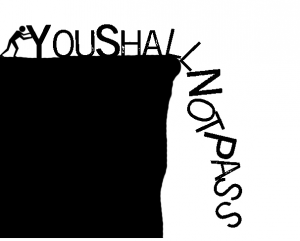Ah personal vows. I’m big on those and one core vow I made several years ago was to seek out the best of the best. Locate talent, nurture it, then share it with you guys. I’m passionate about mastery. Mastery however requires sacrifice, and that sacrifice is we cannot do all things. We need to let go. Knowing that, I made it my personal mission (and my company W.A.N.A. International’s mission) to recruit those who were masters of THEIR realms.
My motto? If I am the smartest person in the room, I’ve done something horribly wrong.
Many of you have already had the pleasure of taking a class with USA Today Best-Selling Author Cait Reynolds. If not? She has a whole list of classes coming up (listed below). Today, however, another master is here to share her gifts with us today.
Lisa Hall-Wilson is one of the best teachers I’ve ever had the honor to work with. She taught me Facebook 😀 . But she’s also an unbelievable craft teacher so I’m handing today’s post over to her for an amazing lesson about the power of vows….
***
Want to raise the stakes for your character through internal conflict? Deep POV is a great technique to bring out this tension because it allows the reader deep into the character’s psyche and allows for an intense examination of their motivations and morals.
Drawing a line in the sand, giving your character a personal vow, can create the kind of inner turmoil that drives a character to outrageous page-turning decisions and mistakes. Vows also give insight into backstory and help define character voice.
I love that scene from the Fellowship Of The Ring where Gandalf screams at the Balrog: “You shall not pass!” Awesome. That was a game changer scene, it ratcheted up the conflict several notches. Gandalf went to the ultimate extreme to make sure that Balrog did not pursue the rest of the Fellowship.
Does your main character have a line in the sand, a personal boundary past which they will not cross? Great!
Now go shove them off the cliff.
*Note: Not every character does or should have a personal vow. It adds a layer of complexity that requires skill with characterization to pull off well because a vow should influence a character’s motivations and morals, but it’s rarely their main story goal.*
Ever whispered a vow in the dark of the night, tears streaming down your cheeks? Maybe you were caught in the middle of a messy divorce. Maybe you experienced a trauma of some sort, the kind that haunts you – and down deep inside you made yourself a promise so that hurt never happens again:
I will never…
Everyone has a line in the sand, a secret vow. No matter what else happens, this is one inviolable line they will not cross. Most people, at some point, make several of these vows, some innocuous, some more serious.
Some people make these vows consciously and others are completely unaware of these personal vows. We are more committed to some vows than others. Some vows are made to prevent a past hurt or harm from being repeated (I’ll never date a drug lord again), and some vows are harmful and need to go (I will never weigh over 100 pounds).
Pushed Beyond All Limits
Laurell K. Hamilton’s Anita Blake Vampire Hunter novel Blue Moon uses a really great personal vow as a story element. Anita Blake has several rules or lines in the sand which have been firmly established in previous books in the series, but she is forced to violate one rule after another. It started off innocently enough, Blake is uncomfortable, she’s not happy, but she can shake it off.
As the novel continues, Blake faces escalating circumstances. Some of her compromises haunt her, change her (and not always for the better) and she has to figure out how to live with that. Blake ends up back-tracking and…well, go read it. I couldn’t put it down.
But the reverse can also work.
I loved the movie Law Abiding Citizen with Gerard Butler and Jamie Foxx. At the beginning of the movie, Foxx’s lawyer character comes across as a good guy, but someone willing to cut corners to achieve what he saw as the greater good. Butler’s character creatively, and rather gruesomely, pushes Foxx to the point where he has to dig in and say here and no farther.
By the end of the movie, Foxx sees the problem with cutting certain corners and draws a line in the sand: I will never make a deal with a murderer ever again.
Complexity
Vows are hard to pull off in simple plots. These lines in the sand are often in addition to a character’s main goal in the story. For instance, Scarlett O’Hara in Gone With The Wind vows: “As God is my witness, I’m going to live through this and when it’s all over I’ll never be hungry again…” Scarlett’s conscious goal for the story though is to be with Ashley Wilkes. *shakes head – never understood that* That’s what she schemes for, dreams about, etc.
Her unconscious goal is to have the love of a man who can make her feel secure (ahh – see the built-in tension there when what she’s pursuing won’t get her what she really wants). She isn’t even aware of this internal conflict until the end of the book when Ashley finally becomes available and she realizes it’s actually Rhett she wants. Rhett Butler is the one who makes her feel secure (she talks about how he comforts her in the night after a bad dream, etc), but now Rhett’s gone.
However, Scarlett never went hungry again. Her preoccupation with money caused a lot of problems for her, because she confused money with security. It’s easy to see how that vow added tension and conflict for her character.
The Writer’s Dilemma
The problem with this story element is that a reader might lose respect if a character breaks ALL of their personal vows. For a character to remain worth cheering for, if a line in the sand has been defined, at some point the character has to stand their ground no matter what it costs them.
There may be gray areas of their vow they compromise on, there may be some backtracking. They may make a vow part way through the story as Scarlett does. Maybe the character needs to give up a harmful or unrealistic vow. Regardless, these vows strongly influence the character’s motivations and desires heading into the big main conflict. If they don’t, I’d question whether they need to be there.
Personal vows are one way to add compelling conflict, but it requires an intensely personal POV.
I’m teaching a two-week intensive on Method Acting For Writers: Learn How To Write Deep POV starting August 1st. This is just one appendix lesson from that class. I’m offering a WANA-only price for this course.
What are some of your favorite literary vows or lines in the sand?
I’m also teaching a class on Facebook, so you can learn what to post so readers respond on July 22 and a new class on September 9 on creating strong female characters. Check out those classes!
***
THANK YOU LISA!
Talk to us! We love hearing from you. Well, I do, namely because I am lonely and y’all are seriously interesting. What vows have you made? Good or bad or dumb?
I’ve done all of the above, and have particularly excelled in bad and dumb vows (but I’m much better now 🙂 ). Seriously, I think one of my greatest strengths is I am loyal, but sometimes being loyal is just being epically stupid when you’re loyal to the wrong people, ideas, goals etc.
For instance, I vowed I wouldn’t give up on my first novel. Took 5 years to see I actually didn’t even HAVE a novel so that was a seriously stupid vow. Remember what I always tell you guys, Persistence looks a lot like stupid. Sometimes it IS hard to tell.
And MAKE SURE to check out the classes below and sign up! Summer school! YAY!
For the month of JULY, for everyone who leaves a comment, I will put your name in a hat. If you comment and link back to my blog on your blog, you get your name in the hat twice. What do you win? The unvarnished truth from yours truly.
I will pick a winner once a month and it will be a critique of the first 20 pages of your novel, or your query letter, or your synopsis (5 pages or less).
NEW CLASSES WITH USA Today Best Selling Author CAIT REYNOLDS!
Obviously, I have my areas of expertise, but I’ve wanted for a long time to fill in some gaps on classes I could offer.
Cait Reynolds was my answer.
She is an unbelievable editor, mentor and teacher and a serious expert in these areas. She consults numerous very successful USA Today and NYTBS authors and I highly, highly recommend her classes.
















31 comments
4 pings
Skip to comment form
I am currently writing a psychological suspense novel. My main character Deborah is torn for a lot of reasons. She gets pregnant and her father makes her get an adoption despite her wishes because she is underage. Now that is older and in college, she is always thinking about her son, the one she could not raise. Her major is even social work. I am debating whether she should look for her son or have him be a client of hers. The guilt and not knowing how the baby is doing is eating at her.
Thank you for having me and your kinds words above. HA! I still remember that call from Texas asking me to a part of WANA. That was a game changer for me!
I have this personal vow (because I was bullied a lot as a child) where I told myself: “I will never let them see me cry.” And I don’t. I rarely cry in public. EVER. I wait til I get home and fall apart. lol
Thank you so much for this Blog! I see my characters in a different light now and can see where to go next!
I’m a big fan of layering depth and meaning. This won’t work for every story, but when it’s used well it’s very compelling.
That exposition of how the writer can raise dramatic tension by having a central character make a vow is very clear and persuasive. I’ve used the device in my current WIP, but not very consciously. You’ve given me a tool to improve that whole area of characterisation. Thank you!
Glad to help!
I am writing a creative nonfiction book, and will use your suggestions about raising tension by using a vow. Thank you. I would not have thought of that.
Happy to help. Glad you found it useful.
Thanks for your expertise. The vow is an awesome tool I may have to incorporate into my story! Thanks for the idea!
When used well, the personal vow is a great tool. When it’s not used well, readers can come to hate your protagonist (if they never stand for anything or cave in on all their values, for instance).
There are four main characters in my Teen/YA scifi series Tetrasphere. I use first person present for each of them (in a way that doesn’t confuse anyone) and they’ve all made personal vows that influence what they do. One is determined to never love anyone, another is determined to win his love, a third will love the fourth forever and the fourth has vowed to destroy someone she’s irrevocably tied to. Their vows are challenged and they grow, sometimes painfully. I didn’t realize until I read this, that these are the vows you’ve defined in this article. Thank you.
Glad to help! Your story sounds interesting. Complicated… but interesting.
I recently made a vow of my own, deciding that it was time to throw out all my fashion rags, and choosing to flaunt my own personal style instead of caving to what others might think. Reading this made me think about the characters in my novels, and I realized that they have a few vows of their own, and I’m excited to explore them. In fact, my post today was inspired by this one so I included a link to this article. Thank you for inspiring me!
Thanks for sharing your post! Sounds like some interesting stories in the works. Delving into motivations and desires is a very powerful tool for character building.
Great post. My protagonist made a vow to look after her best friend’s child if something ever happened to her, never thinking that it would, and also being very guilty about something she failed to do for that same friend years before. The secret guilt means she is even more compelled to fulfil that vow even though her husband and family can’t understand why. It’s a great way of providing character motivation and also tension between her and those around her, also internal tension as she’s not exactly equipped to deal with a ten year old! I wasn’t going to include the scene where she actually made that promise but after reading your post I think I might. It’s a great backstory moment and also will make it clearer to the reader why she’s doing what she’d doing. Thanks for the push. (I tried to access the POV course you mentioned in your post but the link didn’t work for me)
Backstory is tricky, but sounds like an interesting story premise! Hmmm – not sure why the link isn’t working. I’ll check with Kristen. In the meantime, here it is again: https://wanaintl.com/event-registration/?ee=540
Thanks!
I am currently working on a young adult adventure story. Coming up on the ending, and this article is well timed. I think a vow will add some depth to the MC’s mother.
I know it will be an intense scene that has building up for the entire book.
It may help explain a lot to the main character.
Thanks for sharing.
Glad you found it helpful!
Thank you, Kristin, and thank you, Lisa, for this very informative break down of this, great information! As an emerging, just starting out author who went for years with no idea whatsoever that I would ever want to write a book, it wasn’t until I just got back the first book manuscript of a two book project I have recently finished, that I even knew “Deep POV” existed, but that is what my editor suggested I needed to work on. This really helped me understand it a lot better. I feel like I am that person down in the deep water and the light is just starting to finally break through (cobwebs, chains falling, voices singing hallelujah). Set in Big Sky, Montana, about a Siberian husky and her journey to becoming a Seizure alert/response dog, and her leaving her paw prints all over everyone’s hearts in the process, each book has a different conflict for Leah, Sadie’s owner. Evidently, according to my editor, as again, I am just starting out on this journey to learning about all of this, I am “guilty as charged”, lol, of being so “in love” with my characters that I hated to make them argue, etc. But it all is starting to make sense now, and hopefully, when I am done with this rewrite, I will be well on my way to writing page-turners that readers can’t put down. Thanks again!
P.S. – Oh, I forgot to mention, I will forward this to my editor so she can include it in her reading/example suggestions for her future clients!
Thanks Flossie, glad you enjoyed the post. This is a story element more than writing technique. Deep POV is a very powerful writing technique and this story element is paired with it very effectively.
I love all this. I like to run a character up a tree and then set fire to the tree (Tolkien did this in THE HOBBIT, and then he sent wolves to sit down around the trees. Learn from the best, I say…).
LOTR is a big deal around my house too! 😀
I read and tweeted this yesterday. Today I’m using it. Great idea, the breaking of a personal vow. Many thanks!
Glad you found it helpful!
When I first read this, I thought it was something I’d completely overlooked in my WIP. And then I realized the opening line is “One day, Lily promised herself, I will walk down the stairs alone. Looks like a vow to me!
Of course, it’s not just about the physical act of walking down the stairs (that would be a lamely narrow vow), it’s about the recognition as an independent adult that the act implies for her.
My eyes have been opened to deep POV in the last two days. It’s hard to wrap my head around it, although I’m working hard to grasp it. It goes against everything I’ve been taught and everything I’ve read. I read/write suspense/mystery. At the risk of sounding ignorant, does anyone know of any books I could read that reflects deep POV?
This post came at the perfect time. I was having trouble figuring out how I wanted to play my MC and now I think I have something more to work with – Thanks
Glad you found this post helpful!
Hi Trish! Anything contemporary (any genre) written in first person tends to be Deep POV by default. A lot of popular fiction is written in Deep POV – especially any of the romance genres. Most of the spec fiction novels I’ve read lately have been in Deep POV.
Thanks. Would you tell me the name one of the fiction novels? I’m about to blow up my Kindle with samples trying to find one.
Thanks!
[…] This is just ONE appendix lesson from my two week intensive course on learning to write in Deep POV. Visit Kristen’s blog to read the whole post. […]
[…] all this today? Well I read an article on author Kristen Lamb’s Blog (click here to read) about using personal vows to increase the tension in your story, and it got me thinking. […]
[…] Read the rest of this post HERE. […]
[…] up so many writers, Roz Morris shows how to add suspense to your story, Lisa Hall-Wilson uses personal vows to increase story tension, Tamela Hancock Murray wonders: should I use song lyrics in my writing?, and Kathryn Craft shows us […]